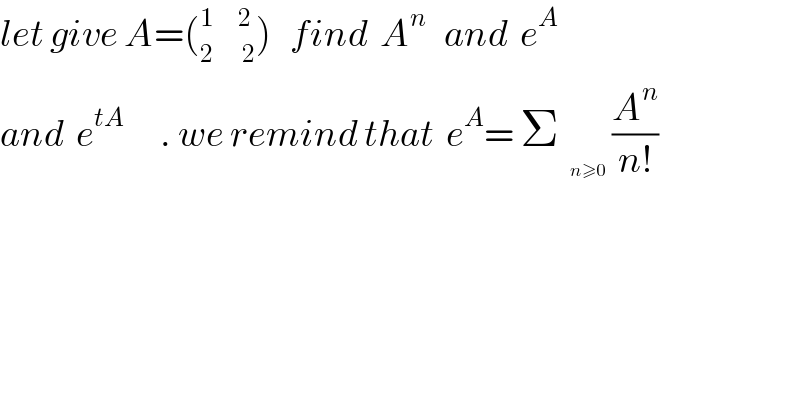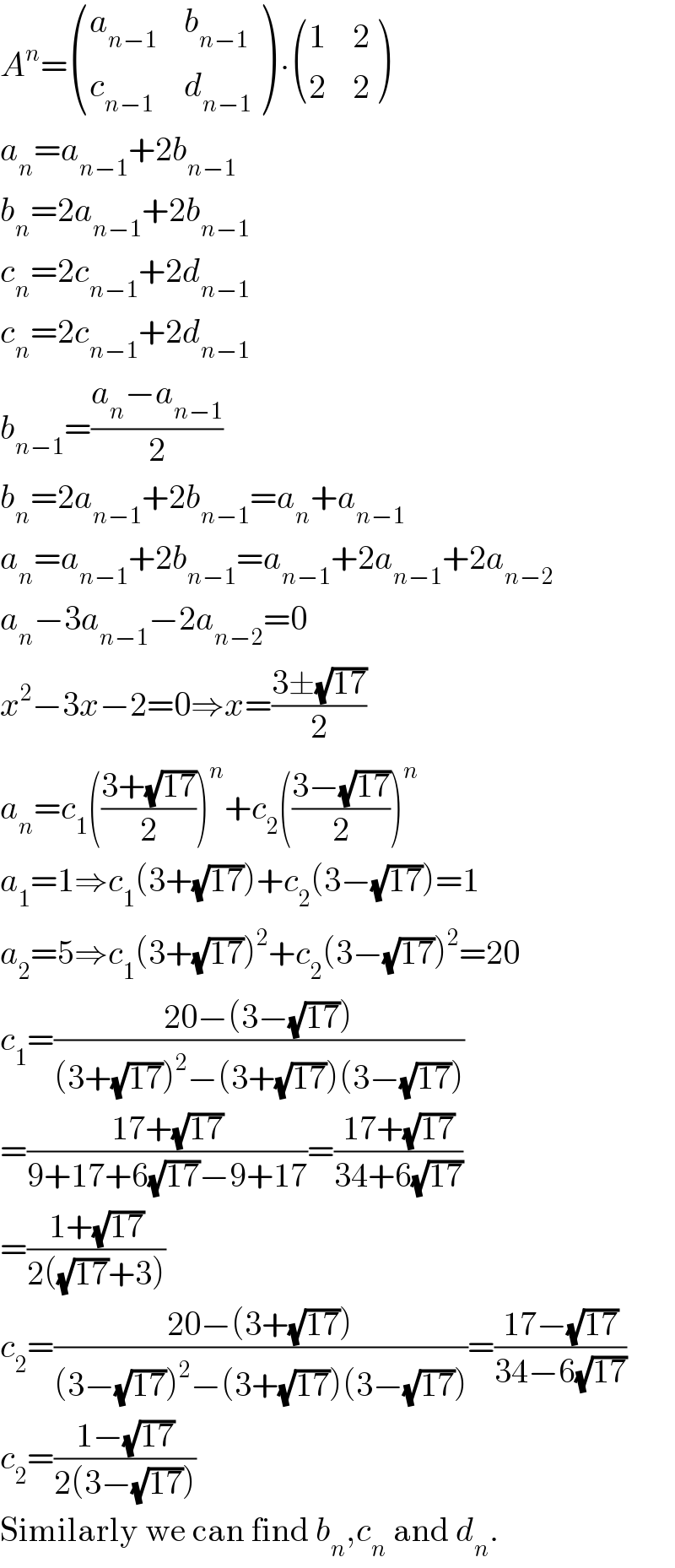
Question and Answers Forum
Previous in Matrices and Determinants Next in Matrices and Determinants
Question Number 27343 by abdo imad last updated on 05/Jan/18

Commented by Rasheed.Sindhi last updated on 05/Jan/18

Commented by abdo imad last updated on 05/Jan/18

Commented by Rasheed.Sindhi last updated on 06/Jan/18

Commented by Rasheed.Sindhi last updated on 07/Jan/18

Commented by prakash jain last updated on 06/Jan/18

Commented by Rasheed.Sindhi last updated on 06/Jan/18

Commented by abdo imad last updated on 06/Jan/18

Answered by prakash jain last updated on 07/Jan/18

